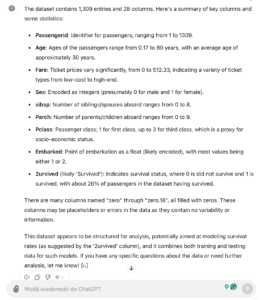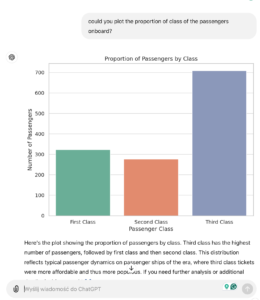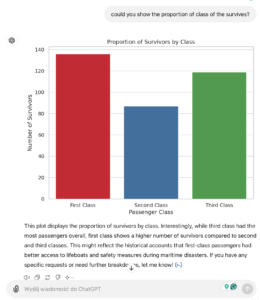Introduction: The Role of Generative AI in Decision-Making
With the rise of AI, particularly generative models like GPT gaining widespread attention, there’s an increasing curiosity about how these tools can be applied within organizations. Specifically, how useful can they be for decision-making, particularly for those in managerial or executive roles? Can AI tools take over decision-making processes, or will they remain just another tool for occasional use? This article explores these questions, looking at the potential and limitations of generative AI in supporting executive decisions.
The Limitations of AI in Executive Decision-Making
Generative AI may have made significant strides in various fields, but when it comes to executive decision-making, it’s clear we are far from creating an autonomous AI decision-maker. While it’s technically possible to develop systems capable of making decisions, several barriers make this impractical, especially in complex environments where bias and incomplete data present serious risks. A well-known example is the COMPAS scandal, where AI models exhibited biased decision-making, showing the difficulty of applying AI in nuanced, human-centric scenarios.
Moreover, research into the subject reveals that most executives are not looking for AI to replace their decision-making processes. Instead, they prefer to use generative AI as a supportive tool—one that saves time by offering insights or automating routine tasks. This way, executives can focus on the critical elements of their decisions while AI helps them gather data, analyze trends, or provide a starting point for more in-depth analysis.
Boosting Executive Decisions with AI Under Time Pressure
Executives often rely on intuition and experience to guide their decision-making, but time-sensitive challenges require rapid problem-solving. In these high-pressure situations, having access to quick insights becomes invaluable. Generative AI can serve as a helpful assistant, providing useful information or alternative perspectives that might be otherwise overlooked due to time constraints.
While generative AI, like large language models (LLMs), should be used cautiously—especially given their known tendencies to “hallucinate” or produce plausible but incorrect information—they can still provide useful insights if handled appropriately. Engaging in a simple conversation with an AI model may help executives overcome minor obstacles and make more informed decisions without having to dive into extensive research.
In many cases, this type of preliminary analysis would typically be delegated to advisors or performed by the executive themselves. However, in time-sensitive situations, generative AI can quickly become a game changer, offering rapid solutions or ideas that facilitate decision-making.
In more advanced applications, executives can even upload datasets (such as CSV files) and ask generative models to perform specific analyses. Many LLMs are capable of translating user requests into code, typically in languages like Python, and running operations directly on the data. This allows executives to quickly generate graphs, compare data sets, or conduct simple analyses within minutes. Such capabilities are especially useful when large amounts of data need to be quickly processed and summarized.
For example, in an analysis of the Titanic dataset, an LLM was able to provide quick insights, such as highlighting how third-class passengers were less favored during the rescue process. This type of analysis, completed in just a few minutes, shows how LLMs can assist with data interpretation, providing executives with timely and actionable information.



The Potential of LLMs in Supporting Cognitive Tasks
While fully autonomous AI decision-making is still out of reach, the incorporation of features like vision and sound into generative models opens up new possibilities for these tools to assist with cognitive tasks. These models can act as personal assistants, handling repetitive and time-consuming tasks such as data analysis, research, and documentation.
Generative AI can help guide executives during the research phase of decision-making, offering suggestions and insights or quickly synthesizing vast amounts of information. It is particularly useful for problem-solving scenarios where quick access to relevant data is critical. While the technology isn’t yet sophisticated enough to handle all aspects of decision-making, it can significantly reduce the time spent on preparation, allowing executives to focus on more strategic elements.
The Executive Perspective on Generative AI in Decision-Making
To gain deeper insights into the application of generative AI in decision-making, we spoke with Marcin, an executive and co-author of this series. His insights offer a real-world perspective on the value and limitations of generative AI in a business context.
Marcin’s Insights:
- On the potential of generative AI in decision-making:
- “I see enormous potential in Generative Artificial Intelligence (GAI) to enrich and accelerate decision-making processes. AI can certainly help decision-makers to base their decisions on facts and data. However, it is important to remain realistic—AI won’t replace human decision-making anytime soon. While it can aid in data collection and analysis, decision-making requires a broader context, including intuition and soft factors like communication and organizational dynamics.”
- On the balance between AI assistance and human judgment:
- “While AI can improve decision-making by enforcing data-driven approaches, it is still far from understanding the full complexity of human interactions and organizational politics. These ‘soft‘ factors play a crucial role in the daily decision-making process, influencing how decisions are implemented and accepted within an organization.”
- On the use of generative AI in everyday tasks:
- “Personally, I use GAI to speed up my business writing and gather facts or suggestions that are quickly reusable. It allows me to save time by automating some of the more mundane tasks, letting me focus on higher-level decisions.”
- On what’s still missing for AI to become a better decision-making assistant:
- “While generative AI tools are already helpful, they need to evolve in terms of ease of use and contextual understanding. I expect advancements in prompt engineering and conversational interfaces, which will make the decision-making process feel more natural and collaborative—similar to how human decision-making thrives in transparent, trust-based, and iterative group settings.”
Conclusion: Generative AI as a Supportive Tool, Not a Decision-Maker
Generative AI, particularly in the form of LLMs, holds immense promise for supporting decision-making processes, especially for executives and managers facing time constraints or information overload. However, its role is likely to remain supplementary rather than central. While AI can streamline workflows, offer insights, and assist with data analysis, it lacks the ability to fully comprehend the complexities of human decision-making, which often involve context, communication, and intuition.
As the technology continues to evolve, executives can expect even more sophisticated tools that will make their decision-making processes faster and more efficient. For now, generative AI is best viewed as a powerful assistant—a tool that can help sharpen decisions, but not make them independently.




